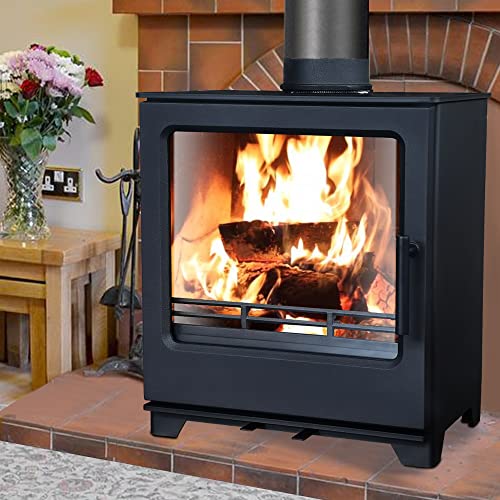Understanding Mixed Fuel Stoves: An In-Depth Guide
Mixed fuel stoves are flexible and effective cooking home appliances that enable users to harness the advantages of different fuel types. While standard stoves predominantly operate on a single fuel source, mixed fuel stoves offer versatility, which can be especially beneficial in remote areas or during power interruptions. This short article offers a detailed summary of mixed fuel stoves, their benefits, types, usage, and upkeep tips, guaranteeing readers are educated before purchasing or using one.
What are Mixed Fuel Stoves?
Mixed fuel stoves are created to operate on more than one type of fuel, offering flexibility in cooking methods. The most common types of fuel utilized in these stoves include:
- Wood
- Gas (Propane or Natural Gas)
- Electricity
- Coal
- Pellets
With the ability to switch between these fuels, mixed fuel stoves can adjust to various cooking needs, local availability of fuels, and personal preferences.
Benefits of Mixed Fuel Stoves
Mixed fuel stoves feature a number of benefits that make them an appealing option for both home and outside cooking. Here are some essential advantages:
1. Adaptability
- Users can choose their preferred fuel based upon accessibility or cooking requirements.
- Perfect for areas where access to a single fuel type may be limited.
2. Performance
- Mixed fuel stoves can supply higher cooking effectiveness compared to conventional stoves, decreasing cooking time and fuel usage.
- Some stoves are developed to optimize the combustion of wood or pellets, producing less smoke and harmful emissions.
3. Emergency situation Preparedness
- During power interruptions or natural disasters, mixed fuel stoves stay operational, offering a trustworthy cooking source.
- Users can stock various fuel sources for emergencies.
4. Environmental Benefits
- Many mixed fuel stoves, particularly those that make use of wood or pellets, are designed to abide by rigid emissions policies, resulting in a smaller sized carbon footprint.
- Sustainable fuel choices allow for sustainable practices that can support environment-friendly living.
5. Cost-Effectiveness
- Depending upon local fuel prices, users can pick the most cost-effective option for their cooking requirements.
- Lowered dependence on electrical energy can reduce monthly energy expenses.
6. Improved Cooking Experience
- Mixed fuel stoves often offer a more genuine cooking experience, particularly in outdoor settings for grilling or barbecuing.
Types of Mixed Fuel Stoves
Different types of mixed fuel stoves are available, each with distinct features and cooking techniques. Here are some typical types:
| Type | Fuel Options | Main Use |
|---|---|---|
| Wood-Burning Stoves | Wood, coal, pellets | Residential & & outdoor cooking |
| Gas Stoves | Gas, natural gas | Indoor cooking |
| Multi-Fuel Stoves | Wood, pellets, gas, electricity | Versatile cooking applications |
| Rocket Stoves | Wood, biomass | Effective outside cooking |
Wood-Burning Stoves
These stoves mostly use wood as a fuel source and are widely known for their capability to produce an abundant taste when cooking. They can also utilize coal and pellets for added adaptability.
Gas Stoves
Gas stoves can run on either gas or natural gas and are extensive in property kitchen areas. Mixed fuel alternatives allow users to switch to alternative fuel sources if required.
Multi-Fuel Stoves
Designed for optimum flexibility, these stoves can switch in between wood, pellets, gas, and electricity, making them perfect for numerous cooking scenarios.
Rocket Stoves
Generally used in camping or survival situations, rocket stoves are efficient, often using small twigs or biomass, making them best for outside cooking.
Frequently Asked Questions About Mixed Fuel Stoves
Q1: Are mixed fuel stoves safe to use?
Yes, when utilized appropriately, mixed fuel stoves are safe. Users must follow manufacturer guidelines and ensure proper ventilation to avoid smoke buildup.
Q2: Can I transform my existing gas stove to a mixed fuel choice?
In some cases, yes. You need to speak with a licensed specialist or producer for expediency and safety.
Q3: How do I keep my mixed fuel stove?
Regular upkeep includes cleansing ashes, looking for blockages in chimneys, and ensuring all seals and gaskets are undamaged. Speak with the user handbook for specific maintenance jobs.
Q4: What is the best kind of fuel for mixed fuel stoves?
The best fuel depends on personal preferences, availability, and cooking design. Wood offers a genuine taste, while gas provides immediate heat and convenience.
Q5: Can I utilize mixed fuel stoves indoors?
Many mixed fuel stoves are designed for indoor use, but it's vital to follow standards and have sufficient ventilation to prevent smoke inhalation.
Tips for Using Mixed Fuel Stoves
- Test Fuel Options: Before selecting a primary fuel source, test various choices to see which yields the best outcomes for your cooking style.
- Educate on Safety: Always understand precaution, especially with gas stoves. Make sure connections are tight and examine for leakages.
- Clean Regularly: Keep the stove clean to guarantee appropriate function and prevent accumulation of creosote or soot, especially with wood-burning alternatives.
- Shop Fuel Properly: Store fuel sources in a dry, safe location to avoid degradation and ensure simple gain access to.
Mixed fuel stoves offer a versatile and efficient service for cooking experts and home chefs alike. With Cast Iron Multi Fuel Stove to use various fuel sources, these stoves not just accommodate various cooking requirements but also supply a backup in emergencies. By understanding Cast Iron Multi Fuel Stove , types, and upkeep of mixed fuel stoves, users can make educated decisions that boost their cooking experience while promoting sustainability.
As cooking routines continue to develop, mixed fuel stoves represent an innovative service for combining custom with modern innovation, bridging the space between diverse culinary practices and responsible fuel intake.

